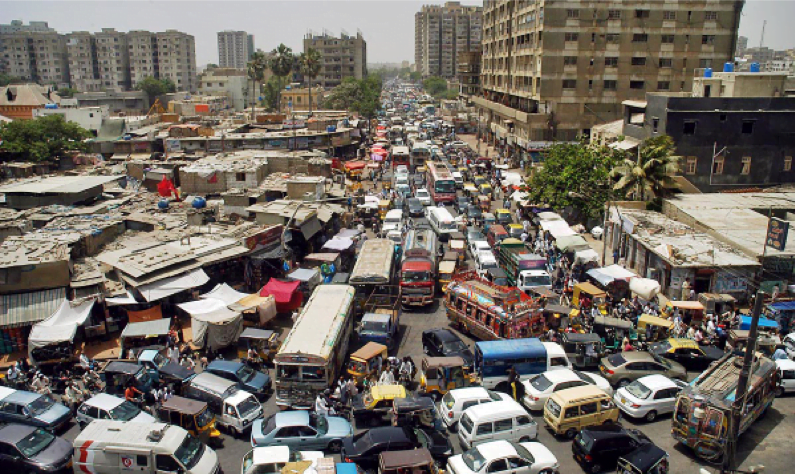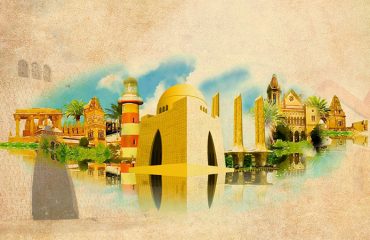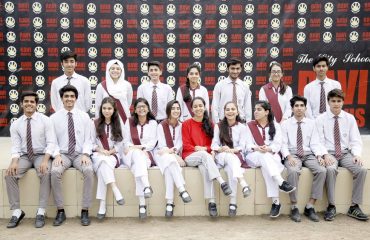Karachi, the third largest metropolitan city in the world, has been reopened Bloomberg published an article earlier last week on the deterioration of the city’s public transport structure.
Today we will analyze the damaged public transport in Karachi and the reluctance of the stakeholders to solve this problem, reflecting the terrestrial realities and the study of the company Mister Auto on cars in the city.
Starting with Muhammad Ali Jinnah Road, the road is of major importance as it connects the central part of the city to its main port. With thousands of daily commuters, the MA Jinnah road usually sees massive traffic jams.
The road is also occupied by an inaugurated upper bridge built for the federal government project, Greenline BRT. The project was completed in 2018 but lack of coordination, budgetary constraints and the reluctance of the ruling elite delayed the project for an unspecified duration.
According to research conducted by auto company Mister Auto in 2019, the city has been ranked as the worst public transportation system in the world. The study considered about 100 major cities. About 42% of the city’s travelers use public transportation as their daily vehicle. However, overcrowded and decades-old buses, the usual violation of traffic rules, unpaved roads and unprofessional drivers are the real and daily threat to the safety of citizens. The country’s first capital and major tax-paying city is home to the country’s major ports and regional offices of several multinational corporate giants.
Unfortunately, despite paying a large tax, the city comes from the essential facilities for living. The funds generated by the city are used in other regions. According to Waseem Akhtar, who recently served as mayor of the city, only 12% of the city administration is under his control. The number of cantonal councils, various federal government institutions and other unnecessary authorities divided the authority of the city into various stakeholders instead of the mayor.
The most recent exposure to poor urban planning in the city was observed during the monsoon rain in August this year. The city suffered from severe urban flooding after record rainfall and many areas were flooded for more than a week. With 64 victims and thousands rescued, the flood left many citizens trapped without electricity, cell phone service, and cash as most ATM links fell.
After the monsoon destruction in the city, Prime Minister Imran Khan decided to visit the city with an announcement of a development package worth 1.1 trillion rupees. The package was announced in collaboration with the provincial government including the circular railway system and bus project. The amount announced by the government is actually more than the $ 6 billion bailouts that Pakistan has agreed to from the International Monetary Fund (IMF) to prevent bankruptcy.
The practicality of accessing those funds is a completely different argument. The Sindh government’s transport department has already acknowledged that they cannot afford to carry out large projects on their own. Although Prime Minister Imran Khan has announced 162 billion rupees for mega projects in the city, the city has not received any money earlier this year according to officials. According to the federal government, it spent about Rs 24.65 billion by June. However, an allocation of another 17.9 billion has been made for the current fiscal year.
The federal and provincial governments have announced several transportation projects over the years to address the city’s deteriorating transportation issue, but those projects have been limited to announcements only. Most projects have never started, although few have not been able to sustain them for more than a few years. On the other hand, Lahore started train service earlier this month as they already have similar types of bus projects running at least for the last seven years.
Karachi, Pakistan’s most populous city was once well connected by trams and a circular railway, but corruption, mismanagement and transport mafia in the disguise of local bus unions gradually destroyed the city’s transport sector in the late 1990s. Major railway tracks of the circular railway system have become illegal slums with people moving from villages or smaller towns to Karachi to improve their income and lifestyle. The stations that once operated have now become a center for drug addicts and traffickers for their illegal activities. The previous federal government announced to restoration of the circular railway project in 2017. The constant pressure from the courts has forced the officials to try to restore the historic transportation mode of the city. The Karachi Circle Railway (KCR) is due to resume operations this week on 16 November.
Karachi’s most controversial project, Greenline BRT, was announced in June 2014. The project has miserably not met the deadlines and has repeatedly exceeded the predicted deadline. According to the latest update, the federal planning minister said that the project will be completed by the middle of next year.
For every problem of the citizens, there is a mafia that benefits from these things. They earn millions and billions every year by spending on the problems of a common citizen. Because of these mafias and their spokespersons in the government institutions, delays in the projects have become the fate of a city for a long time. KCR progressed after a discussion of at least 15 years, Water supply project lasted 18 years. The luxury area of the city is still deprived of aqueducts and residents depend on water cisterns aka ‘oil tanker mafia’.
Watch this space for more information on that. Stay tuned to Feeta Blog for the latest updates about architecture, Lifestyle and Interior Design.



